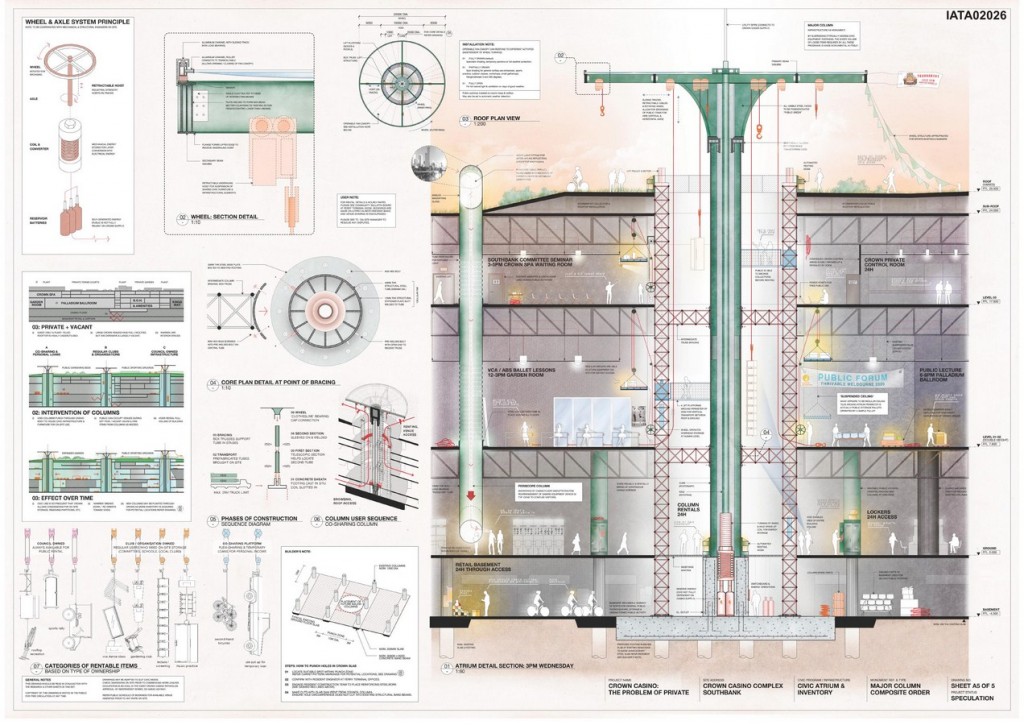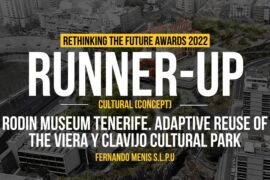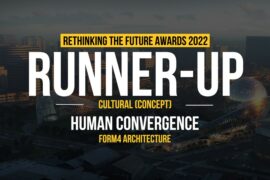The public life of cities is broadly a result of two aspects: of formal urbanism (gives collective meaning) and informal occupation (supports everyday activity). In architecture, the essence of these drivers can be found in (1) monuments, and (2) infrastructure. Since the birth of civic life, these two entities have each lent public space the virtues of (1) symbolic or political weight and (2) service & utility. Fast-forward to the 21st Century, and its Problem of Privatisation. The proliferation of corporate “Bigness” has consumed public life and deformed its constituents: monument has become icon, and infrastructure no longer refers to public service but exclusive amenities.
Participant Name: Amelyn Ng
Country: Australia

The public life of cities is broadly a result of two aspects: of formal urbanism (gives collective meaning) and informal occupation (supports everyday activity). In architecture, the essence of these drivers can be found in (1) monuments, and (2) infrastructure. Since the birth of civic life, these two entities have each lent public space the virtues of (1) symbolic or political weight and (2) service & utility. Fast-forward to the 21st Century, and its Problem of Privatisation. The proliferation of corporate “Bigness” has consumed public life and deformed its constituents: monument has become icon, and infrastructure no longer refers to public service but exclusive amenities.
Sheet 3/5: Cathedral x Ferry Terminal: This program, much required by Southbank’s future use of the Yarra River for water taxis, is located prominently along the waterfront, and was thus paired with a civic monument tall enough to physically rival the height of the adjacent Casino Tower and recognisable enough to symbolically rival the Casino-as-private-icon. However unlike the static nature of cathedrals, the new Vaults are interpreted as lightweight mobile canopies. These can be freely retrofitted by the public for civic gathering and celebration, as well as intimate social and learning spaces.
Sheet 4/5: Colonnade x Informal Market: Drawing from the fundamental roots of urban democracy, the Greek stoa and its repetitive colonnades were used to imbue the new Southbank Market with the connotations of continuity, unity and civic freedom (directly challenging the Casino’s controlling and disorienting nature), while being fully operable for market vending, swap meets and independent trade. This intervention surrounds and feeds off the Casino’s 24h buzz, encouraging diversity, co-sharing between citizens and after-hours occupation.

Sheet 5/5: Composite Column x Civic Inventory: The most invasive intervention is found in a new kind of column Order- essentially large atrium-voids driven through the Casino’s body which store infrastructure typically required of civic events, activities and organisations (e.g. picnic tables, audiovisual equipment, stage sets, lecture seats, suspended on underhung hoists). Its premise lies in the fact that Casino ballrooms and halls are mostly vacant over the week due to expensive rates. With these column-voids, the public now gains vertical access into these spaces for opportunistic civic use (when empty), and can rent out any of the equipment conveniently stored on-site. As the inventory expands over time with the acquisition of more items, more columns can be planted throughout the Casino, unlocking private zones to the public and effectively breaking up the superblock’s vice-like hold on the site.
Prev Post
Dipping Edge | Kwan Ho Felita Li
3 Mins Read





